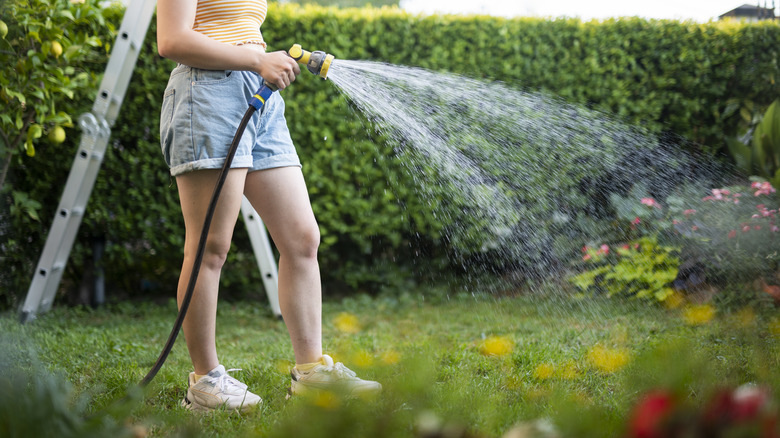Does the slight mention of yard work lead to an eye roll? As spring picks up and your grass begins to bud, those long summer mornings don’t sound as pleasant as they used to. If you’re already despising the preparation that comes with a pretty yard, centipede grass may just be your new best friend.
This Pinterest-approved grass is all about ease -– especially to get rid of weeds. Pinterest user Yard and Garden Guru notes that centipede grass is known for its tolerance to heat, alongside its minimal need for maintenance. And no need to worry if your lawn only gets partial sun. Though centipede grass prefers full sun, a bit of shade doesn’t hurt. After the last frost of spring, sow your centipede grass seeds. A lush, healthy lawn for half the work? Sounds good!
Though the heat-friendly alternative is amazing, it’s important to note the cons of centipede grass. Centipede grass isn’t a plant that can grow perfectly in shade, in fact, lack of sufficient light will lead to growth issues or kill the grass. And because the grass is sensitive, it does grow slower than others. Any heavy foot traffic will kill the grass, leading to a long recovery. It’s also important to note your climate before you make the switch.
Centipede grass prefers climates similar to the Southeastern U.S., humid and tropical. Lots of moisture is needed. If you’re ready to sow your centipede grass seeds, be sure you know how to care for your lawn.
Maintenance for your centipede grass

Now that you’ve made the switch, it’s time to till your soil. Readying the soil and keeping an eye out for moisture retention is key. As the grass prefers natural humidity, mulching will also be beneficial in building a strong root system. Some options for preparing your grass and building great drainage are EZ-Straw and GroMulch once or twice a year during the spring and late summer. This will also keep your lawn free of debris.
Centipede grass does need a bit of care all year long. Just because your lawn is dormant, it doesn’t mean it’s dead. So, be sure to maintain your lawn by clearing debris to ensure direct sun. Be wary that centipede grass doesn’t do well with ongoing temperatures of 5 degrees Fahrenheit or less. Alongside taking care of the grass comes cuttings. Though infrequent because of its slow growth cycle, keeping it at 2 inches in height will work in your favor.
Testing your soil every so often is also good for protecting your centipede grass. The grass naturally prefers acidic soil, with an average pH of 4.5-6. Add natural soil acidifiers like aluminum sulfate, elemental sulfur, or iron sulfur to lower the pH of your soil, if needed. Too high of a pH balance can cause issues with growth and change the tint of your foliage. Simple maintenance can help you achieve a lush, bright green lawn!